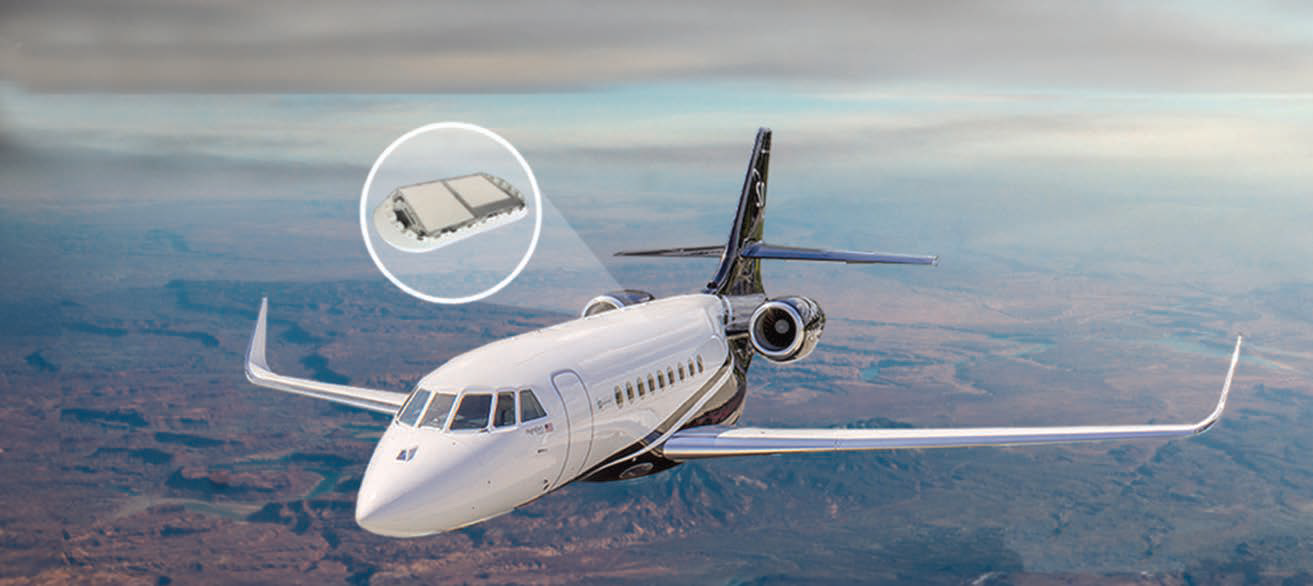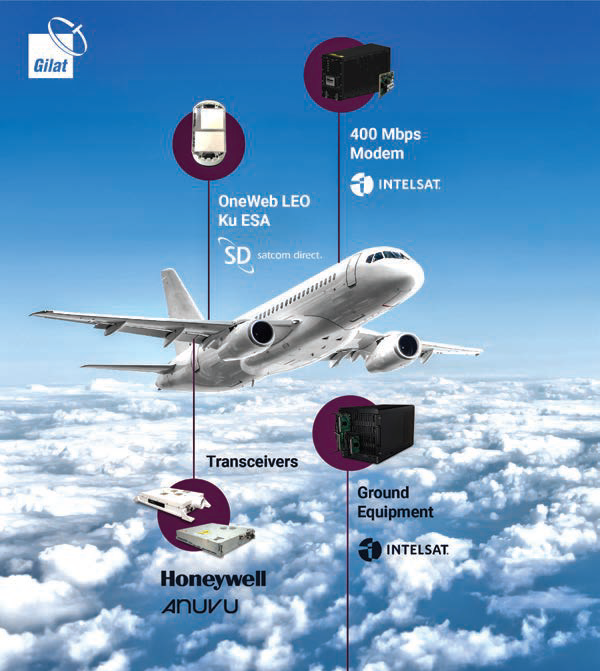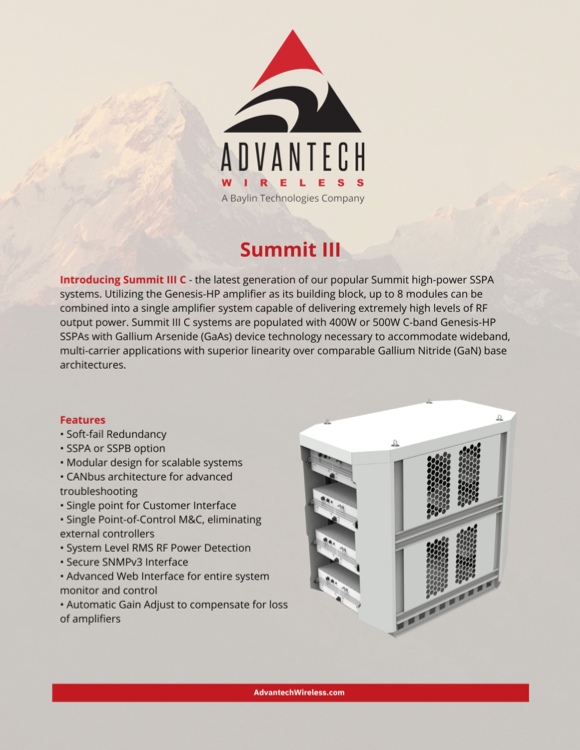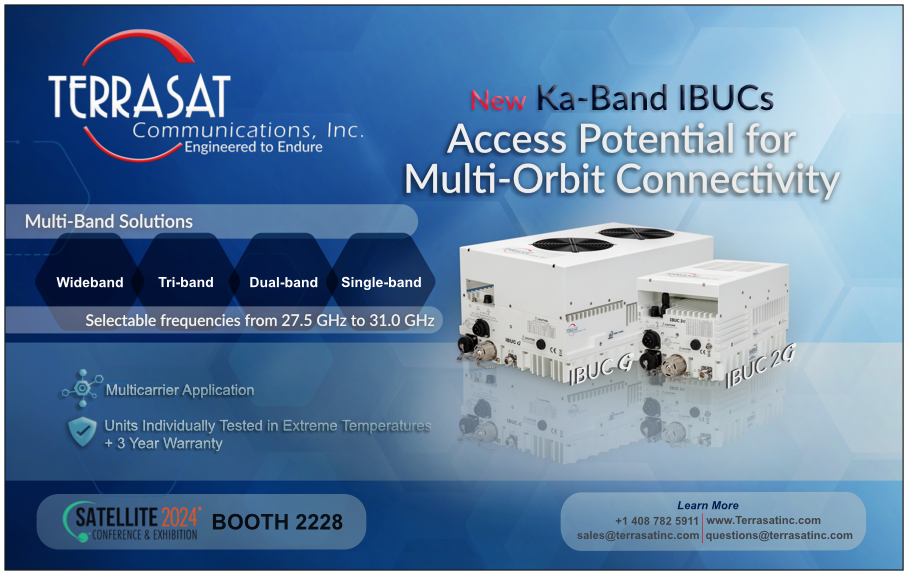The Potential of Electronically Steered Antennas (ESAs)
During the past 10 years, we have witnessed the emergence of Electronically Steered Antenna (ESA) technology for satellite communication terminals, particularly in the context of mobile satellite services and in-flight connectivity (IFC).

The demand for high-speed internet on moving platforms prompted the development of ESA, capable of tracking satellites with high precision, fast beam switching, and operating in highly dynamic environments.
In recent years, ESA technology has continued to advance, with improved performance, efficiency, and affordability. ESA systems are now being deployed in various industries beyond aerospace and defense such as maritime, remote sensing, 5G networks, autonomous vehicles, and more.
Additionally, the rise of Non-Geostationary Orbit (NGSO) constellations has created new large opportunities for ESA technology. The ability of these antennas to perform fast switching between satellites within a LEO or MEO constellation as well as between orbits is crucial for maintaining a continuous communication service over a wide coverage area.
In an increasingly interconnected world, IFC is evolving from a luxury service used by few to an essential service expected by most passengers and airline crews. The latest innovation of ESA has emerged as a technological breakthrough that is bound to reshape the landscape of in-flight communication.
The Challenge Of In-Flight Connectivity
Whether for business communications, entertainment, or staying in touch with loved ones, passengers expect reliable and seamless in-flight connectivity. Conventional mechanically steered antennas, although effective, are limited in their ability to support NGSO services due to their inherently slow satellite tracking and when switching from one satellite to another.
NGSO-based services require a large amount of beam switching (every few seconds) and satellite handovers (every few minutes) during a flight route and that equates to frequent service disruption if beam and satellite switching is not seamless.
In addition, mechanically steered antennas include motors and other moving parts that reduce the reliability of the satellite terminal resulting in internet service outages, frequent maintenance calls, and disruptions to airline operations.
ESA: Revolutionizing In-Flight Connectivity
ESA antenna systems employ a network of electronically controlled modules, each responsible for directing the antenna beam toward the satellite of choice. Unlike traditional mechanically steered antennas, ESA requires no physical movement of any element to adjust the antenna’s orientation, and satellite tracking and switching is performed nearly instantaneously. This agility enables the ESA to maintain a constant connection by dynamically adapting to changes in satellite position and other environmental factors.

Gilat has been investing in ESA technology development over the past five years to address commercial, business, government, and defense aviation market segments, with breakthrough ESA demonstrations for in-flight connectivity during 2019 and in the following years.
These technology demonstrations confirmed the feasibility of ESA technology for the aviation market including multi-orbit operations supporting satellites in GEO and LEO orbit.
GEO and LEO orbit.
Gilat was recently selected by Satcom Direct as the driving force behind the technology that will deliver the highest possible bandwidth to business aviation customers using Eutelsat OneWeb’s Low Earth Orbit (LEO) constellation.
The ESA antenna will be mounted on the aircraft fuselage and connected to Satcom Direct management and Wi-Fi systems inside the cabin. The ESA terminal will enable Satcom Direct to deliver an unparalleled internet connectivity user experience and the highest data transfer capabilities.
Gilat is uniquely qualified to provide the next generation of ESA aero terminals based on its technology leadership in the IFC market delivering thousands of aviation-grade modems and solid-state power amplifiers for its worldwide customers over the past seven years. The ruggedized ESA terminal adheres to strict aviation quality standards, including safety of flight standards.
Gilat’s proven, active phased array technology supports GEO and NGSO constellations, exhibiting continuous multi-orbit connectivity in Ka and Ku- frequency bands, guaranteeing seamless communication service -globally. The company’s ESA terminal’s compact, low-profile flat design and light weight minimize drag and fuel consumption and the efficient SWaP (Size, Weight, and Power) enables passive cooling and minimal drag on aircraft.
The open standard interface demonstrates our commitment to interoperability and facilitates the integration with any modem, allowing for a seamless connection between Gilat’s ESA terminal with any existing SATCOM infrastructure.
Conclusion
Electronically Steered Antennas have ushered in a new era of in-flight connectivity, one that meets the escalating demands of today’s passengers and the aviation industry for connectivity.
ESA technology’s ability to provide high-speed internet, seamless communication, real-time entertainment, and operational enhancements represents a transformative leap forward.
As ESA technology continues to evolve, the sky is no longer a barrier to communication and productivity — it is a realm where passengers can enjoy uninterrupted connectivity and airlines can elevate their offerings to meet the ever-increasing expectations of a digital world.

The fusion of ESA with aviation marks a ground-breaking convergence of technology and travel that has the potential to redefine the passenger experience and reshape the future of air travel.
Gilat is at the forefront of ESA technology, working with key service providers and aircraft manufacturers to customize the technology to fit the antenna to various aircraft types and missions.
For more information about Gilat and its ESA offering: www.gilat.com/technology/esapaa/
www.gilat.com

Amir Yafe
Author Amir Yafe has over 30 years of diverse experience in the telecommunications industry including engineering, marketing, product management, and strategic sales. In his current position at Gilat Satellite Networks, Mr. Yafe serves as VP Mobility and Global Accounts and oversees strategic sales and business development with global satellite operators, as well as inflight connectivity & mobility service providers. Before joining Gilat Mr. Yafe spent 11 years at Spacenet USA in various senior positions, the last as head of marketing and product management. Mr. Yafe holds both Bachelor’s and Master of Science degrees in Electrical Engineering from the University of Illinois.



